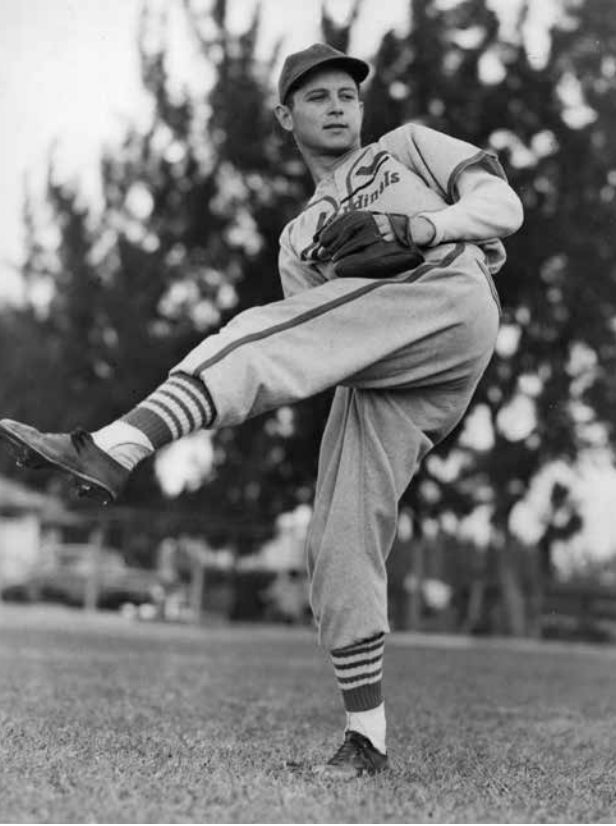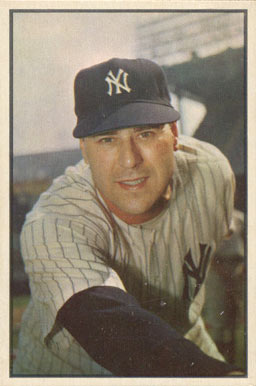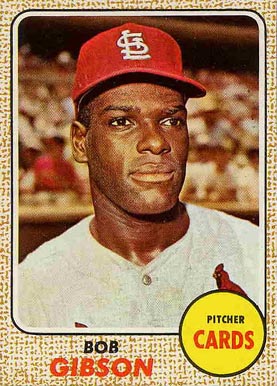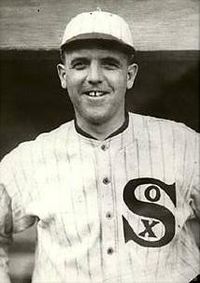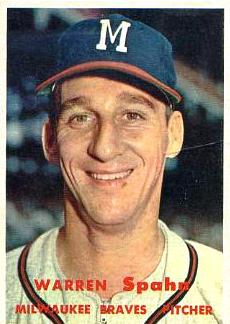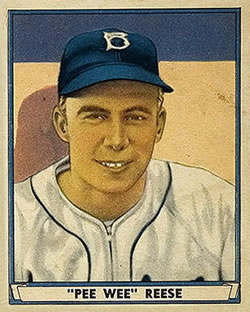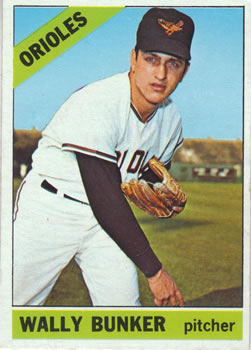October 9, 1944: St. Louis wins! Cardinals defeat Browns in Trolley Car Fall Classic
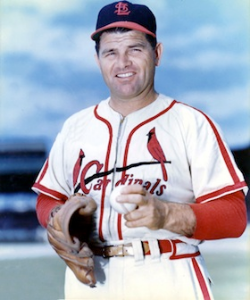 “Most of the crowd at the series seemed to be eager for the underdog Browns to upset the Cardinals,” wrote the St. Louis Post-Dispatch about Game Six of the Trolley Car World Series in the Gateway City.1 Described by sportswriter Sid C. Keener as the “people’s choice,” the Brownies hoped to even the Series and extend the fairy-tale season in which they captured their only pennant by sweeping the New York Yankees in four games on the last weekend of the season.2 The Redbirds, playing in their eighth fall classic since 1926, were on the precipice of their NL-leading fifth championship.
“Most of the crowd at the series seemed to be eager for the underdog Browns to upset the Cardinals,” wrote the St. Louis Post-Dispatch about Game Six of the Trolley Car World Series in the Gateway City.1 Described by sportswriter Sid C. Keener as the “people’s choice,” the Brownies hoped to even the Series and extend the fairy-tale season in which they captured their only pennant by sweeping the New York Yankees in four games on the last weekend of the season.2 The Redbirds, playing in their eighth fall classic since 1926, were on the precipice of their NL-leading fifth championship.
The Series had been more competitive than many had expected. The Cardinals had looked invincible for most the season, owning an 89-29 record before slipping into a prolonged funk and losing 20 of their last 36 games. Nonetheless, their 105 victories marked the first time in NL history that a club had reached the century mark in wins for three consecutive seasons. Skipper Billy Southworth’s squad still looked vulnerable as the Series opened, the first and only one featuring two St. Louis teams. The Browns took two of the first three games, leading many to wonder if David could slay Goliath, but the sleeping giants eventually woke up. The Cardinals, in the words of J. Roy Stockton in the Post-Dispatch, “shook the lethargy and faltering gait of the late season slump” to win Games Four and Five behind distance-going gems by Harry Brecheen and Mort Cooper.3
For Game Six, Sportsman’s Park was crowded with 31,630 spectators, many of whom “dressed in fur coats, overcoats, and wrapped in blankets, [and] tried to ignore the chilly weather,” noted sportswriter John R. Bell.4 Temperatures hovering in the mid-50s at the 2:00 P.M. game time and overcast skies led to the smallest crowd of the Series with unoccupied swaths of seats in the bleachers and pavilion.
The Cardinals, in their home white uniforms, sent Max Lanier to the mound. Among baseball’s best southpaws, Lanier had a 66-45 record in seven seasons, including a 17-12 slate in 1944 while earning his second straight All-Star berth. He looked sharp early, setting down the side in order and fanning two in the first. Manager Luke Sewell counted on Nels Potter, a journeyman right-hander who had emerged as a staff ace, winning 19 games to even his career record at 51-51. He, too, set down the first three batters he faced.
The Browns struck first when Chet Laabs smashed a one-out triple off the center-field wall. Donald H. Drees of the St. Louis Star and Times described it as “one of the longest hits seen here in years” and compared it to Babe Ruth’s moon shot in the 1926 World Series.5 With the infield playing in, George McQuinn sent a bounder over Lanier’s head and just out of reach of second baseman Emil Verban to drive in Laabs. Swingman Ted Wilks began warming up to replace Lanier, who had struggled down the stretch, losing his last seven starts with a 6.29 ERA while plagued by chronic shoulder pain.
“Lanier mixed his fastball with slower stuff effectively,” wrote Stockton; however, the southpaw looked shaky most of the game.6 He escaped a scare in the third when center fielder Johnny Hopp couldn’t reach Mike Kreevich’s rapidly sinking liner, resulting in a two-out double, followed by a walk before Lanier got out of the jam. Laabs led off the fourth with a walk and made it to third with two outs, but was stranded after Lanier intentionally walked Red Hayworth to face Potter, who grounded out.
Meanwhile, Potter’s “dypsy-dew assortment of twisters” kept the Cardinals off balance, wrote Keener.7 Shortstop Vern Stephens saved a likely extra-base hit when he made what sportswriter W.J. McGoogan called “one of the most sensational plays of the series,” snaring Walker Cooper’s screeching liner in the webbing of his glove for the first out of the second.8 Potter also got into the highlight reel by picking off Whitey Kurowski to end the frame. In the third, Potter escaped trouble after consecutive one-out singles by Verban and Lanier.
Potter came unraveled in the fourth thanks to porous defense, the Browns’ glaring Achilles’ heel throughout the Series. Cooper walked on four pitches with one out and moved to third on Ray Sanders’ single. Kurowski hit a tailor-made double-play grounder to Stephens, but his high throw pulled second baseman Don Gutteridge off the bag.9 As Cooper crossed the plate, Gutteridge’s throw to McQuinn was late. Instead of an inning-ending twin killing, the Redbirds had tied the game and still threatened. After Marty Marion flied out, Verban and Lanier connected for RBI singles for a 3-1 lead.
Though the rest of the game was scoreless, it was not without its tense moments. Lanier was “hanging on the ropes” by the sixth inning, according Keener.10 After one out, he yielded consecutive walks to Laabs and McQuinn, drawing manager Southworth to the mound. Both runners moved up on Lanier’s next pitch, a wild one in the dirt, prompting Southworth to summon the right-handed rookie Wilks, coming off an impressive campaign (17-4; 2.64 ERA). Sewell drew heavy criticism after the game for his decision to remain with right-handed Mark Christman, mired in a 2-for-21 slump, instead of opting for a left-handed pinch-hitter. Kurowski scoped up Christman’s grounder to third and fired a strike to catcher Cooper, who easily tagged Laabs, who came to the plate standing up. Wilks retired Hayworth on a fly out to end the frame.
Browns relievers Bob Muncrief and Jack Kramer held the Redbirds scoreless over the final 4⅓ innings, though they did yield four hits and walked three. One of those hits was by Hopp, who rounded first and then headed for the dugout apparently under the impression that Laabs had caught his fly in left. He hadn’t, and Hopp was subsequently out at second.
Wilks “swept the Browns down like they were tenpins,” gushed sportswriter John Drebinger in the New York Times.11 Given the start in Game Three, Wilks had yielded four runs and eight baserunners in just 2⅔ innings and was saddled with the loss. It was a completely different script in this contest; he retired all 11 batters he faced, including four by strikeout. Pinch-hitter Mike Chartak went down swinging for the final out, ending the game in 2 hours and 6 minutes.
“The celebration of the Cardinal victory must merge with deep regret that the gallant Browns [lost],” mused Stockton in the Post-Dispatch.12 The Cardinals’ depth proved to be too much for the underdog Browns. Lanier and Wilks combined on a soul-crushing three-hitter with nine strikeouts; Cardinal batters banged out 10 hits, all singles, and for the fifth time in the Series, the Redbirds played flawlessly in the field.
One of the stories of the game was the Cardinals’ pitching, which had led the majors in ERA the last three seasons. Cardinals hurlers limited the Browns to a paltry .183 batting average (36-for-197) and .254 slugging percentage. McQuinn, the offensive star of the Series, had seven of those hits (in 16 at-bats) and drove in a Series-high five runs. The Redbirds yielded only 12 runs and struck out a record 49 batters, one of at least 26 records that were tied or broken in the Series.
Far from lighting up the scoreboard, the Redbirds hit just enough to win, batting .240 and slugging .338, numbers that normally would not portend a World Series championship. Cooper, Musial, and Verban paced the club with seven hits each; Sanders scored a Series-high five runs, and no Cardinal knocked in more than two while the club tallied just 16 runs.
As much as the moundsmen, Cardinals fielders were the difference maker in the Series. The best-fielding team in the majors (.982 fielding percentage) committed only one error all Series, an innocuous one by right fielder Stan Musial in Game Five. Their .996 fielding percentage tied the 1918 Boston Red Sox for best in World Series history. The Browns, on the other hand, committed 10 miscues, leading to seven unearned runs (including two in Game Six).
With America at war in the European and Pacific theaters, people had more than baseball on their minds as the 1944 season officially ended. The day after the conclusion of the World Series, baseball was pushed from the front pages of the Post-Dispatch, Star and Times, and St. Louis Globe-Democrat, each of which ran stories about the Allies’ siege of Aachen in Germany, while the fall classic was relegated to the sports sections. There was no victory parade for the Cardinals, or a last goodbye to the Browns in the Mound City, either. Gas rationing made sure of that.
This article appears in “Sportsman’s Park in St. Louis: Home of the Browns and Cardinals at Grand and Dodier” (SABR, 2017), edited by Gregory H. Wolf. Click here to read more articles from this book online.
Sources
In addition to the sources cited in the Notes, the author also accessed Retrosheet.org, Baseball-Reference.com, SABR.org, and The Sporting News archive via Paper of Record.
Notes
1 “Crowd Was for the Underdog, But Had Little to Cheer About,” St. Louis Post-Dispatch, October 10, 1944: 1B.
2 Sid C. Keener, “American Leaguers Get Only 3 Hits as Birds Take Finale, 3-1,” St. Louis Star and Times, October 10, 1944: 17.
3 J. Roy Stockton, “Cards Champions of Baseball World for Fifth Time,” St. Louis Post-Dispatch, October 10, 1944: 1B.
4 John R. Bell, “Shivering Fans Cheer Sun as Well as the Teams,” St. Louis Post-Dispatch, October 10, 1944: 4B.
5 Donald H. Drees, “Browns’ 45th Strikeout Breaks 33-Year-Old Mark,” St. Louis Star and Times, October 10, 1944: 17.
6 J. Roy Stockton, “Potter Batted Out in Fourth; Wilks Replaces Lanier in Sixth,” St. Louis Post-Dispatch, October 9, 1944: 4B.
7 Keener.
8 W.J. McGoogan, “Shave Brings Potter Bad Luck, Whiskers Bring a Calamity,” St. Louis Post-Dispatch, October 9, 1944: 1B.
9 Though the error was charged to Stephens, the Post-Dispatch noted that there was some initial confusion on the play. According to Stockton, official scorers attempted to consult with players and umpires about the play to determine if Stephens’ throw was too high, or if Gutteridge was late to the bag with poor footwork. Players and umpires dismissed the official scorer who charged Stephens with the error. See “Crowd Was for the Underdog, But Had Little to Cheer About.”
10 Keener.
11 John Drebinger, “Cards Take Series by Beating Browns,” New York Times, October 10, 1944: 1.
12 Stockton, “Cards Champions of Baseball World for Fifth Time.”
Additional Stats
St. Louis Cardinals 3
St. Louis Browns 1
Game 6, WS
Sportsman’s Park
St. Louis, MO
Box Score + PBP:
Corrections? Additions?
If you can help us improve this game story, contact us.



